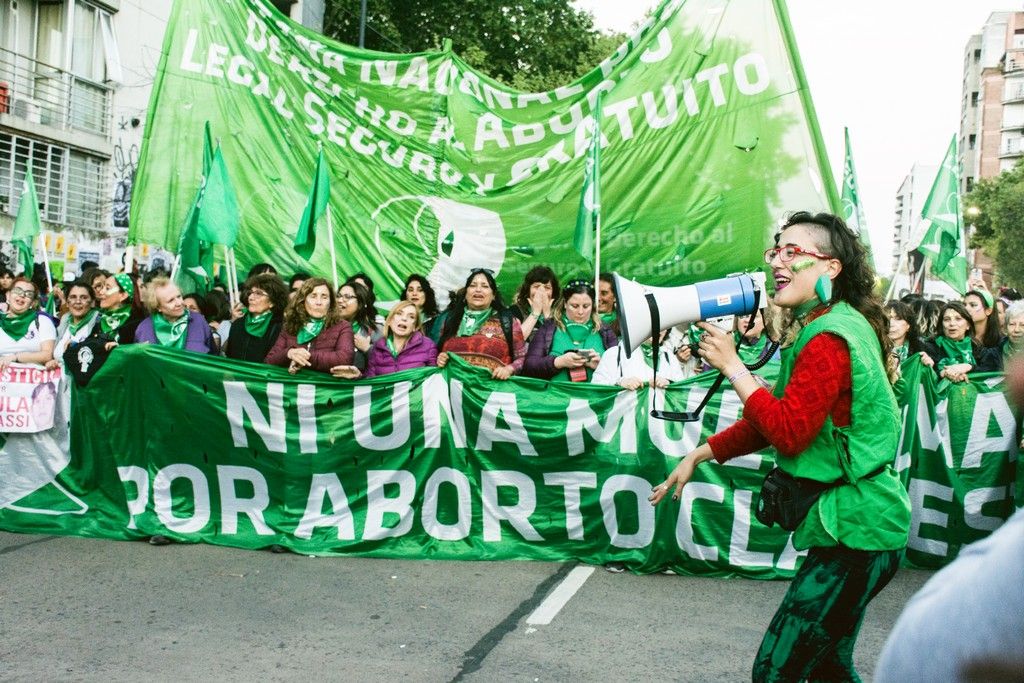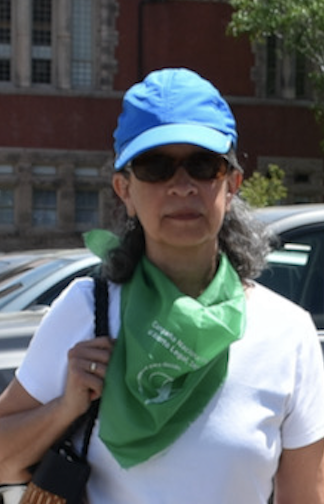Opinion: US Abortion Rights Movement Has Much To Learn From Latin America

Women at a Green Wave protest in Argentina. "Encuentro Nacional de Mujeres" by Gisela Curioni is licensed under the Creative Commons Attribution-Share Alike 4.0 International license.

During the Rally for Reproductive Justice in Amherst last Sunday, an Argentine woman complimented me on the green scarf I wore around my neck. I told her that I’d picked it up in Buenos Aires at a reproductive and sexual rights demonstration, way back in 2011. Actually, I said, I was surprised that more people at the march weren’t wearing green. Maybe they didn’t know that the green scarf had become the symbol of the abortion rights movement across the Americas.
“I wish I’d brought mine with me,” she said ruefully, “but I didn’t think I’d need it here.”
The triangular green scarf is the most visible symbol of Argentina’s long fight for access to safe and legal abortion. When the Argentine Congress debated abortion openly for the first time 2018, reproductive rights activists organized massive street protests. These were much larger than the one I’d attended. I was back in the U.S. by then but it took my breath away, to see the photos of hundreds of thousands of Argentine protestors lifting their green kerchiefs in unison.
The Argentine people have a history of courageous resistance, ever since the brutal Dirty War (1976-83) when a civic-military dictatorship tortured, disappeared, and murdered tens of thousands of political prisoners and suspected dissidents. Those memories are still fresh, and the abortion-rights protestors perceived the abortion ban as a vestige of the dictatorship. In fact, the green scarf of the contemporary abortion rights movement honors the Mothers of the Plaza de Mayo, who demonstrated for the return of their disappeared sons and daughters wearing their trademark white kerchiefs.
Since the return of democracy in 1983, the people of Argentina have demanded that their government promote human rights. They haven’t let up. After 20 years of protest, the country finally annulled the post-dictatorship amnesty laws that had allowed torturers to live freely. It became the first country in Latin America to legalize same-sex marriage, and its transgender rights laws are now some of the world’s most comprehensive. Reproductive rights activists knew they would have to show massive social support if they were to convince legislators to legalize abortion, especially while the Argentine Pope Francis remained pontiff. They built a movement made up of young and old, queer and straight, rich and poor – because they knew all too well that democracy cannot be taken for granted. They were not going back.
The abortion rights movement also understood the power of symbols. They put their bodies on the line. They wore green kerchiefs, green clothes and costumes, green makeup and body paint, green banners, green smoke bombs, and green graffiti. The movement became known as the marea verde, the green tide or green wave.
And it worked. The Argentine Congress voted in December 2020 to legalize abortion, something few had predicted as long as Francis was pope. Since then, the green wave has spread quickly across Latin America. The Mexican Supreme Court decriminalized abortion in September of 2021, and this February the Colombian Supreme Court did the same. This led Erika Guevara-Rosas, Americas director at Amnesty International, to talk about the “unstoppable moment of the green tide in Latin America.”
And yet we in the United States seem poised to move in the opposite direction, because the leaked draft of a Supreme Court opinion – if it holds – will overturn the 1973 Roe v. Wade decision legalizing abortion nearly a half century ago. We have a lot of learn from Latin American abortion-rights activists, as Amy Littlefield wistfully noted in The Nation a couple months ago. “Images of hundreds of thousands of young women in the streets of cities like Buenos Aires can inspire a sense of jealous longing in the United States,” she wrote, “since protests here tend to be a fraction of that size.” Sigh. As I looked around our Amherst rally of about 60 people, I thought, “it’s going to take a lot more than this.”
In the face of mounting threats to democratic rule, we are going to need to step up our game. Maybe it’s because I’ve lived and marched with the survivors of dictatorship in Argentina, but I fear we’re facing a much deeper threat to our way of life than we may realize. But their example gives me hope that we have the power to change what is happening. We need big, loud, eye-catching, broad-based coalitions that link racial justice and voting rights with climate activism and sexual and reproductive movements. And we need to be in the streets. Next time there is a rally or march or protest, I urge you to put your body out there. Take a friend and wear a green scarf.
Lynn M. Morgan is Emeritus Professor of Anthropology at Mount Holyoke College. She is a medical anthropologist and feminist science studies scholar who works mainly in Latin America.
